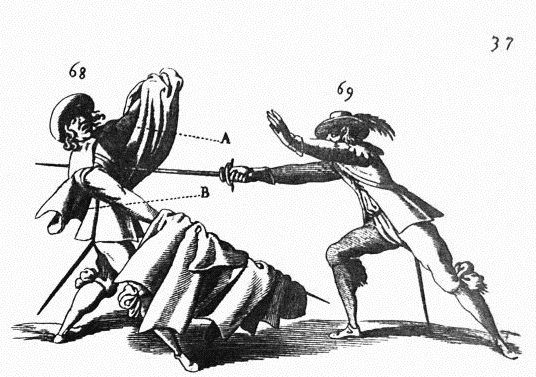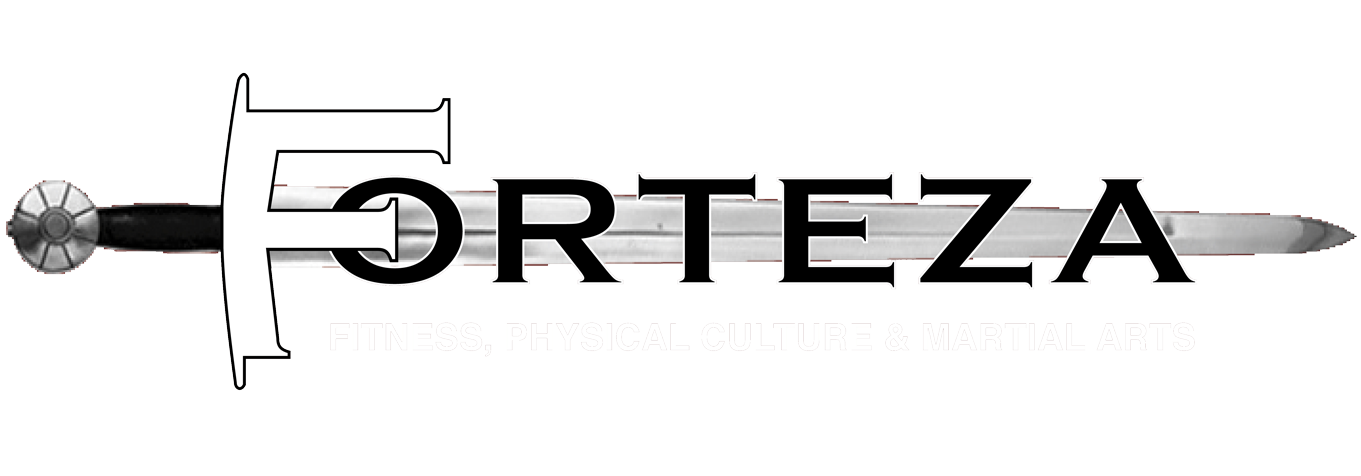
One of the centerpieces of the Forteza curriculum is historical European swordplay. There are a number of traditions of swordsmanship, which can be divided by period: early modern, Baroque, Renaissance or Medieval; and by nationality: English, French, German, Italian or Spanish. As the home of the Chicago Swordplay Guild (and as the Italian name of our studio might suggest), we focus on Italian swordsmanship of the 14th – 17th centuries.
When the Renaissance brought sweeping changes to European culture, Italian fencing traditions also evolved, with a new focus on civilian swordplay. A new, uniquely Italian weapon and fencing style —that of the elegant rapier—swept across Europe; influencing most of the continent for well over a century, and laying the theory of Italian swordplay for the next three centuries.
Now, you can take up the sword and study one of history’s most scientific and dangerous fighting arts, as taught by the early 17th-century fencing masters Salvatore Fabris and Ridolfo Capoferro.
THE RAPIER – DUELING WEAPON PAR EXCELLENCE

A rapier is a long-bladed sword with a complex hilt, optimized for the thrust but still capable of debilitating cuts. The blade is fairly thin and stiff, and counter-balanced to provide greater point control. Rapiers were neither light nor flimsy; a typical rapier of c.1600 had a blade of 42″ in length, a weight of 2.5 – 3 lbs, and was capable of parrying the blows of broad-bladed military swords.
The rapier was generally used either alone, or in conjunction with the sidearms a gentleman would most likely have with him at all times: the cloak and dagger. In keeping with the advice of the ancient masters, you will begin with the sword alone, then add the dagger and cloak after your proficiency with the sword is developed.
THE SIDESWORD – COMPANION IN BATTLE OR SELF-DEFENCE
 The rapier never entirely supplanted the older, broad-bladed “cut-and-thrust” or sidesword. Instead, the old medieval sword was fitted with finger rings and a knuckle bow to protect the hand and continued to serve on the battlefield and in duels amongst traditionalists and military men. Like the rapier, the Renaissance sword was taught both alone and in conjunction with a wide variety of defensive arms:
The rapier never entirely supplanted the older, broad-bladed “cut-and-thrust” or sidesword. Instead, the old medieval sword was fitted with finger rings and a knuckle bow to protect the hand and continued to serve on the battlefield and in duels amongst traditionalists and military men. Like the rapier, the Renaissance sword was taught both alone and in conjunction with a wide variety of defensive arms:
- Brocchiero (the round buckler)
- Targa (square buckler)
- Rotella (large, round shield)
|
- Cappa (cloak)
- Pugnale (a long, double-edged dagger)
- Guanto da presa (armoured gauntlet
|
As you progress through our curriculum you will have the chance to study this ancient weapon, first alone, then with the buckler, and finally, against the rapier.
RENAISSANCE CLOSE-QUARTER COMBAT
Also in keeping with the custom of 16th century fencing schools, concurrent with learning the sword you will also learn basic grappling, dagger and counter-dagger fighting, Abrazare (Italian for “embracing”) is unarmed combat. The goal of the system is to get the opponent onto the ground as swiftly and effectively as possible without going there yourself. Much like classical jujutsu, the fundamental principles of abrazare include:
- Control of the center – Work from where you are strongest, move the opponent away from their own strength, and control the center of the fight;
- Opportune Striking – Use strikes to points of pain to eliminate advantages of size and strength.
- Breaking structure – Use strikes and holds to break your opponent’s connection to the earth.
- Taking space – Occupy your opponent’s space to eliminate their options.
These strategies are applied through a diverse range of techniques, including throws, holds, joint locks, breaks, binds, and disarms, all of which are applied both unarmed and when wielding or confronted by the dagger.
As the sword evolved, so did the dagger. The Renaissance dagger was a large, double-edged weapon, with a hilt identical to that of a sword. You will not only learn how to use this deadly sidearm with the sword, but as your principle defense, fighting in dagger vs. dagger dueling, unarmed against the dagger, and with a particularly unique form, the cloak and dagger.
RENAISSANCE SWORDSMANSHIP AT FORTEZA
Through the study of Renaissance Swordsmanship, you will learn
- A fighting art over 400 years old, that revolutionized the art of swordsmanship and gave rise to modern fencing;
- How to wield the elegant, agile and deadly rapier and the powerful cutting sword, both alone and when combined with daggers, shields or cloaks;
- A solid foundation in natural, elegant movement and universal body mechanics;
- Combative integration – learn how to move from weapon range to grappling range, and how to fight with against diverse weapons in dissimilar combat scenarios;
- The evolution of both the sword and dagger during the Renaissance;
- The history of the duel;
- The history of our tradition and the stories of its most famous (and infamous) students;
- The ethical system of chivalry, in theory vs. practice, and its evolution over time.
Finally, the Renaissance arsenal was a diverse one, and senior students in the Renaissance Swordsmanship curriculum will also have a chance to study a variety of polearms, and the spadone – the massive, Italian two-handed sword.
IS THE RENAISSANCE SWORDSMANSHIP PROGRAM RIGHT FOR ME?
This program will especially appeal to you if you:
- Are looking for an ancient martial art, taught with an eye towards tradition and historical context;
- Want to study an integrated fighting system of armed and unarmed combat that will exercise both body and mind;
- Are interested in working with a diverse array of weapons.
- Come from a background in traditional Asian weapon arts, such as escrima, iaido or kenjutsu;
- Are drawn to history and culture of the Italian Renaissance;
- Are interested in cultural ethos of chivalry and Western traditions of honor;
- Want a martial practice that has the depth and diversity to keep you engaged for a life time.
HOW DO I BEGIN?
Mastery is difficult, but beginning is easy! Just enroll in our Taste of the Renaissance introductory class and let your journey begin.
Read More »




